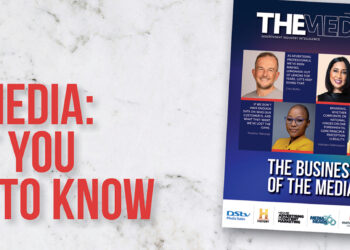The biggest question relating to online publications is how does one make money from it. 24.com’s GM Geoff Cohen explains.
We all know that the barriers to entry for online publications are low. Launching a new print publication, by contrast, is much more difficult, time-consuming and expensive. But even within the online space, the oldest problem of publishing remains: how to make money from it.
Traditional newspaper and magazine publishers solve the problem in one of three ways: they sell their content, they sell their audiences, or they sell some combination of the two. Content can be sold either directly to audiences – the high-end subscription model – or syndicated to other publications, squeezing the maximum possible revenue out of a single item. Audiences, in turn, are routinely analysed, segmented, packaged and sold to advertisers.
In the online world, things aren’t that different. Our options are to sell our content to end-users or other publishers, to sell our audience to advertisers, or some combination of both.
The most direct way to turn online content into cash is to put it behind a paywall and sell it directly. The jury is still out on whether this will work internationally, and there is a lot of debate around the model’s viability in South Africa. There are some specialised niche areas where paid-for content might work – financial information is one example – but the content will have to be of high value, not available free anywhere else, and have an audience that is able and – critically – willing to pay for it.
The ‘freemium’ model – where users get free access to some content, but pay for premium content – has been tried and tested and, in many instances, has the potential to work, especially in the entertainment sector with music and video downloads.
Editorial content syndication is a promising route for some publishers, and one that a number of the 24.com destinations include in their revenue streams. This involves reselling content to other publishers, for their own online offerings or for print.
Another monetisation model comes in the form of selling items other than content, such as value-added services or merchandise. As the number of digitally connected South Africans grows, we are seeing a marked increase in the number of e-commerce destinations, some of which are operated by the publishers themselves and others connected to publishers via advertising or revenue-generating affiliate agreements.
Finally, affiliate marketing is a hybrid of direct sales and advertising in which site owners get a percentage of sales made to customers they refer from their sites.
For most publishers, however, selling content does not compare to the value of selling advertising. ADEX figures show online advertising growing from R141 million in 2005 to R469 million in 2009 – a 233% increase – and predictions are that online adspend in 2010 will close at around R535 million. At 24.com, we believe we’ll see online advertising growth of between 20 and 25% in South Africa in 2011 (this excludes online adspend that moves offshore via platforms such as Facebook and Google).
Yes, that growth is off a small base – the market for online advertising is hovering below 2% of our total adspend, compared to 14.9% globally. But as the number of Internet-connected South Africans grows, along with bandwidth and opportunities for using rich media and video advertising, so we expect to see bigger advertising budgets moving online.
This growth will accelerate even further as mobile Internet use gains complete traction in the South African market. Average daily unique visitors to Digital Media and Marketing Association (DMMA) member mobile sites grew 271% between October 2009 and October 2010. The average time spent on WAP sites increased by two minutes over the same period.
The increase in mobile Internet browsers will also ensure that the digital channel effectively reaches an audience outside of the LSM segments 8-10. This will allow advertisers to embrace the online channel fully.
Another challenge facing online advertising is the widespread belief that online remains a direct response rather than a branding medium, which means that advertisers are pushing to pay for clicks and leads instead of impressions. The pressure to offer performance-based pricing is a definite challenge for local online publishers, as South Africa’s Internet audience is still way too small to make this form of pricing viable.
To survive and thrive, publishers must make the most of technology to track and analyse audience behaviour. The more finely and accurately an audience is segmented and targeted, the higher the advertiser’s ROI.
Content must be developed and delivered to audiences in ways that keep them coming back for more. No matter how ground-breaking your platform or how amazing your content, without an audience you have nothing. If you don’t have an audience willing to pay the costs of creating and delivering their content, you need an audience big enough – and sufficiently well described and understood – to attract advertisers.
Finally, if you’re a publisher or would-be publisher, remember that ad sales are made by people, not websites, and in a growing market like South Africa, a skilled ad sales team is worth a lot.
This story was first published in The Media magazine.














